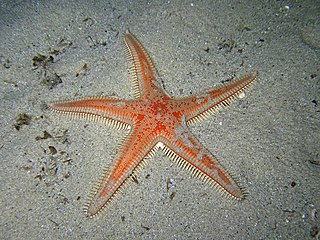
Astropecten aranciacus, the red comb star, is a sea star of the family Astropectinidae. It is native to the east Atlantic Ocean and the Mediterranean Sea.

Culcita schmideliana, commonly known as the spiny cushion star, is a species of pin-cushion star. It has a variety of base colors and often patches of a different color. It is pentagonal in shape and lives in the tropical Indo-Pacific. This species is rarely kept by hobby aquarists.

Astropecten irregularis is a sea star of the family Astropectinidae. Common names include Sand sea star.

Solaster stimpsoni, common names Stimpson's sun star, sun star, orange sun star, striped sunstar, and sun sea star, is a species of starfish in the family Solasteridae.

Solaster dawsoni, the morning sun star, is a species of starfish in the family Solasteridae. It is found on either side of the northern Pacific Ocean. It has two subspecies:
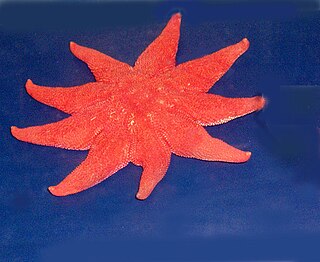
The purple sunstar, northern sunstar, or smooth sun star, Solaster endeca, is a species of starfish in the family Solasteridae.

Calliaster baccatus, the cobbled starfish, is a species of starfish in the family Goniasteridae.
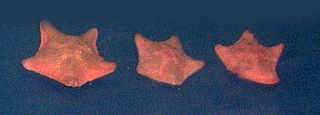
Asterina gibbosa, commonly known as the starlet cushion star, is a species of starfish in the family Asterinidae. It is native to the northeastern Atlantic Ocean and the Mediterranean Sea.

Marthasterias is a genus of starfish in the family Asteriidae. Both species in the genus are commonly known as the spiny starfish.

Leptasterias muelleri, the northern starfish, is a species of starfish in the family Asteriidae. It is found in the Arctic Ocean and the northern Atlantic Ocean. It is a predator and scavenger and is unusual among starfish in that it broods its young.
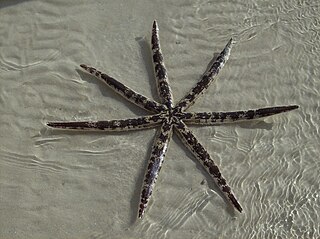
Luidia maculata is a species of starfish in the family Luidiidae in the order Paxillosida. It is native to the Indo-Pacific region. It is commonly known as the eight-armed sea star because, although the number of arms varies from five to nine, eight arms seems to be the most common.
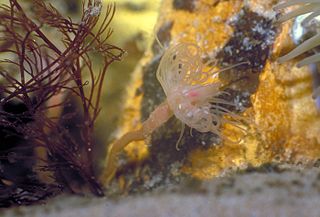
Ectopleura larynx, or ringed tubularia, is a hydroid in the family Tubulariidae.
Paulasterias tyleri is a species of starfish in the family Paulasteriidae. It is found in deep water at hydrothermal vents in the Antarctic. It is the type species of the newly erected genus Paulasterias, the only other member of the genus being Paulasterias mcclaini.

Henricia oculata, commonly known as the bloody Henry starfish, is a species of starfish in the family Echinasteridae. It is native to northwestern Europe. It was first described as Asterias oculata by the British zoologist Thomas Pennant in 1777, later being transferred to the genus Henricia.

Rathbunaster is a monospecific genus of sea stars in the family Asteriidae. The genus name was given by Walter Kenrick Fisher to honor the starfish biologist Richard Rathbun of the Smithsonian Institution. He originally ranged this genus under the family Pycnopididae, synonymous with Asteriidae.
Edwardsia timida, also known as the timid burrowing anemone, is a species of sea anemone in the family Edwardsiidae.

Echinocardium pennatifidum is a species of sea urchin in the family Loveniidae, chiefly found in the northeast Atlantic region.
Leptosynapta bergensis is a species of sea cucumber of the family Synaptidae.
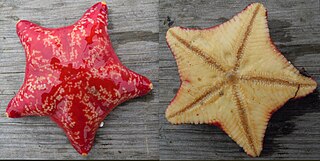
Porania pulvillus, also called the red cushion star or red cushion starfish, is a species of sea star in the family Poraniidae. The specific name pulvillus means "little cushion."
Ebalia tuberosa, sometimes called Pennant's nut crab, is a species of crab in the family Leucosiidae.



















